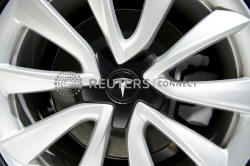|
The company said in a statement posted on its Weibo social media
account that the joint investigation team had conducted an
investigation and analysis of the battery, software,
manufacturing data and vehicle history.
The investigation found no system defect, and the initial
findings show the incident was caused by a single battery module
located at the front of the vehicle, Tesla said.
Japanese battery manufacturer Panasonic <6752.T> supplies Tesla
with battery cells, but not modules, which are a group of cells
joined together.
The company has revised the charge and thermal management
settings on Model S and Model X vehicles via an over-the-air
(OTA) software update, to help further protect the battery and
improve battery longevity, the statement said.
A parked Tesla Model S caught fire in Shanghai on April 21.
Tesla has said its EVs are about 10 times less likely to
experience a fire than petrol-powered cars.
Tesla's local competitor Nio Inc <NIO.N> said on Weibo on
Thursday that some battery modules in its cars might have safety
issues as well, and that it would recall 4,803 units after three
fire incidents in China.
Safety of electric vehicles is a growing issue in China, the
world's largest new energy vehicle (NEV) market, where 1.3
million NEVs were sold last year.
China's industry ministry asked carmakers this month to carry
out safety investigations on waterproof protection, high-voltage
harnesses, in-vehicle charging devices, and battery boxes in
their cars.
(Reporting by Yilei Sun in BEIJING, Makiko Yamazaki in TOKYO and
Brenda Goh in SHANGHAI; Editing by Christian Schmollinger and
Tom Hogue)
[© 2019 Thomson Reuters. All rights
reserved.] Copyright 2019 Reuters. All rights reserved. This material may not be published,
broadcast, rewritten or redistributed.
Thompson Reuters is solely responsible for this content.

|
|





